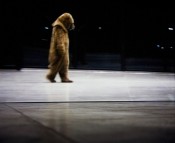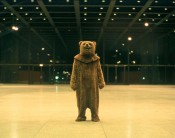‘It is useless to struggle for escape when completely enclosed and confined without an exit’ wrote Manfredo Tafuri in 1976. ‘No “salvation” is any longer to be found within [modern art]: neither wandering restlessly in labyrinths of images so multivalent they end in muteness, nor enclosed in the stubborn silence of geometry content with its own perfection’. For Tafuri, Mies van der Rohe’s late works manifested that silence in a perfected, indeed terminal, form. Mies’s silent spaces – for Mies himself, spiritual refuges – were for Tafuri audible announcements of the total co-optation of Utopian modernism into capitalist technocracy.
Today, thanks to psychoanalytic and other perspectives, the trajectories of the twentieth-century avant-gardes look rather less linear, and their end-points somewhat less claustrophobically predetermined. The belief that the future prospect might be complicated by critical detail retrieved from modern culture’s margins and corners now seems, if not a cause for galloping optimism, at least credible. Like sleepers (‘spies planted in advance for future use, but not currently active’) disruptive elements might be hiding in history’s basement, under desks, behind pillars or partitions. They might be primed to emerge late at night, after closing time, after the sightseers have gone. Their range of operation might seem highly circumscribed, but their effects conversely might be hard to calculate. Sleepers might never be activated; their importance lies in their potential and their staying-power.
Staged over nine nights in mid-October 2004 on the upper level of the New National Gallery, Berlin, Mark Wallinger’s performance Sleeper rendered the quality of staying-power almost palpable. Between ten o’clock and the small hours, Mies’s sublime-temple-cum-car-showroom was squatted by a large brown bear. The bear didn’t ‘struggle for escape’, but paced its enclosure, gazing at onlookers through the plate-glass, sometimes batting the surface with its paws. Bereft of any props or amusements, it crawled on all fours, scratched itself, disconsolately slumped in a soft heap on the gallery’s polished marble floor, or slunk behind the elegant wood panelling, disappearing from its audience’s sight, as animals in zoos are prone to do. But (as they say) no animals were harmed in the production. The bear was Wallinger himself, alone in the space, overheating inside a bulky, sagging, tragicomical fun-fur suit.
‘Restlessly wandering’, the bear-image formed an undeniably multivalent counterpoint to Mies’s architecture: as an unstable emblem of Brandenburg identity, an embodiment of civic isolation or solitary confinement, a cipher for otherness, a demotic pathos-formula or (in John Berger’s phrase) an ‘animal of the mind’, an ironic inversion of the Beuysian shaman-figure- the list could continue. However, the artist’s decision physically to inhabit the symbol he’d mobilised served to bracket its proliferating range of reference inside a specific, reflexive proposition: that the muteness imposed on artists by contemporary conditions of cultural production may seemingly render them ‘sleepers’, but that this a condition of potential, not a terminal one. Alone in the middle of the night, in Mies’s glacial, empty mausoleum, equipped with nothing but a ludicrous bear-suit, Wallinger proved that ‘pessimism of the intellect’ is only half the equation. The courage of his convictions became Sleeper’s core subject.
From: Biennale di Venezia 51: The Experience of Art (Marsilio, 2005, pp. 232-3)
Text © Rachel Withers. All images © the artist.


